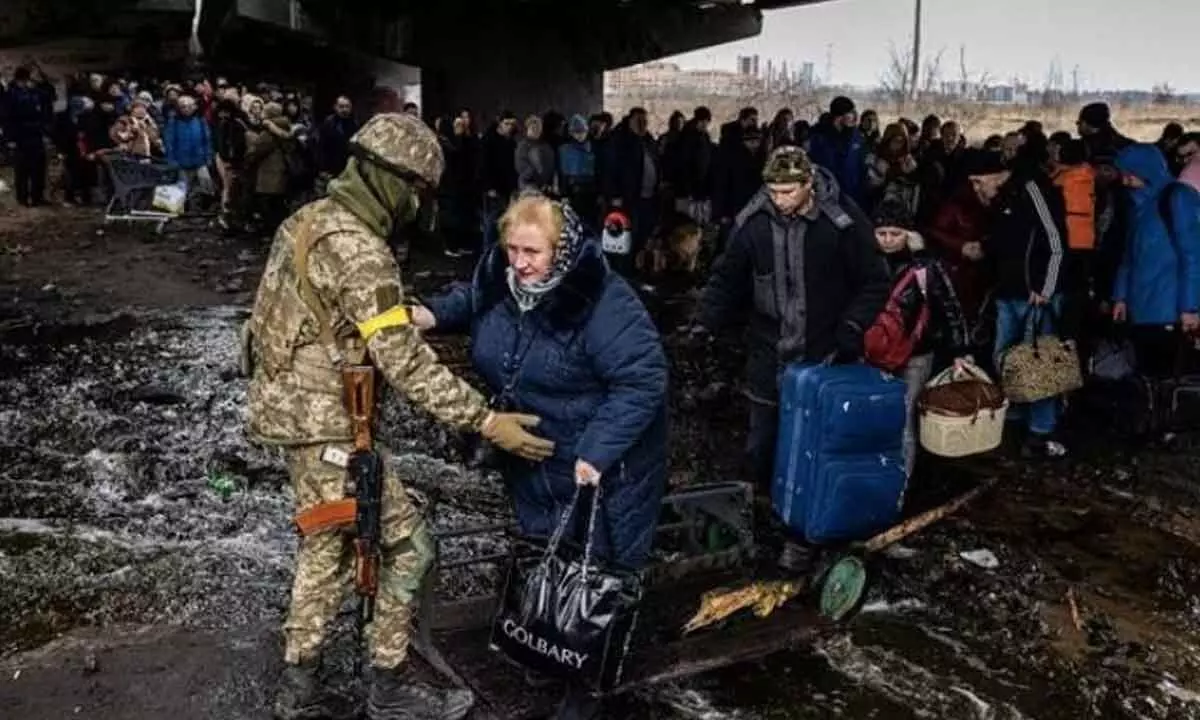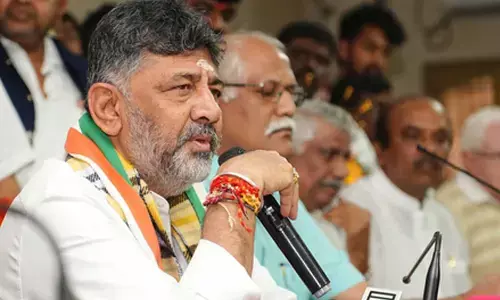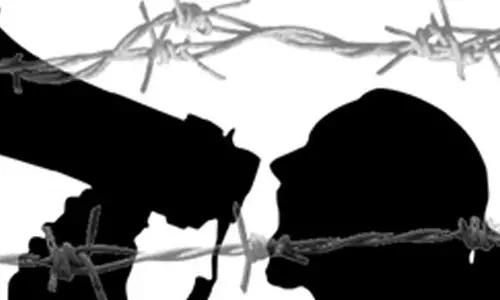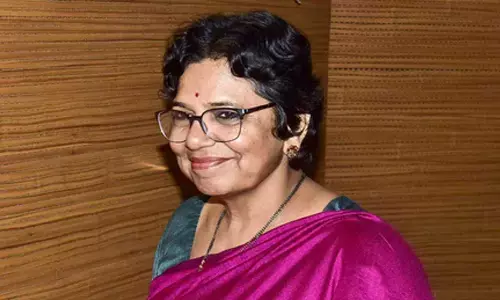Peace talks may fizzle out, but needed for a breather

Between 1946 and 2005, only 39 of 288 conflicts ended in peace agreement. The other conflicts ended in victory for one side or an end to fighting without a peace agreement or a victory, a study elaborates.
The ongoing military conflict between Russia and Ukraine seems to be an endless process with the leaders laying more emphasis on the semantics of peace. Both have declared their intent to put an end to the crisis, yet are nowhere near any conclusive agreement.
Russia insists on Ukraine ending all ties with the US-led NATO forces "in word and deed," while the latter seeks 'guarantors of peace and security,' a highly complex demand for any nation to oblige. It should be noted that though this seems to be a conflict between the two countries, it is more of a conflict between the NATO allies and Russia for supremacy in the region. And Ukraine is the cannon fodder.
It is not that peace talks have not been held between Russia and Ukraine since February this year after the conflict began. But the so-called peace talks have always preferred a U-turn or a 'dead-end situation' as the Russian President Vladimir Putin put it.
The peace process is also hit by the determination of the Russians to carve out a buffer zone in the East and the South of Ukraine under its command and control.
Former Israeli Prime Minister Yitzhak Rabin once said "you don't make peace with friends. You make it with very unsavoury enemies." (In case your enemy is adamant, well you have to live with them as former Indian Prime Minister, Dr Manmohan Singh often stated. "We cannot choose our neighbours," and hence have to live with them, he used to say in the case of Pakistan).
But, are not the risks of peace preferable to the bitter certainty of war?
Andrew Blum, Executive Director and Professor of Practice at Joan B. Kroc Institute for Peace and Justice Kroc School, University of San Diego, says that his experience shows that it is important to understand why talks may – or may not – succeed.
Let us keep aside his argument for a while and look at the statistics. Between 1946 and 2005, only 39 of 288 conflicts ended in peace agreement, according to a research initiative at the University of Uppsala in Sweden. That makes it 13.5 per cent of all the conflicts in the said period. "The other conflicts ended in victory for one side or an end to fighting without a peace agreement or a victory," it elaborates.
So, what is the use of peace talks when negotiations do not halt the conflicts? Negotiations might not halt the conflicts, but they do open truce corridors through which civilians could escape to safety. Right? We have seen this happen even in the current conflict between Russia and Ukraine.
Every temporary ceasefire announcement or the establishment of humanitarian corridors reduces civilian casualties. It also helps in delivering the essentials to the trapped civilians and in maintaining supplies if not direct evacuation itself.
Talks always lead to a thaw in such situations. Indians are no strangers to cross-border firings from Pakistan. There have been civilian casualties too sometimes. Pakistan always tries to push non-State actors (as if the terrorists are the only non-State actors in Pakistan where the only State actors are the Army and the ISI) into India every year. But the spurt in such firings often leads to negotiations at the officers-level by the armies and things cool down a bit. Thus, violence could reduce the heat a bit for some time.
The Nuba Mountains ceasefire agreement in Sudan is said to have helped build trust that led to broader north-south peace talks from 2002. Observers of such situations also cite the opening of a humanitarian corridor by Israel during the 2008-09 Gaza war which helped in lifesaving aid to reach civilians in need of it.
Chanakya gave much importance to diplomacy. War was the ultimate option to attain a solution, he says. He states that, for a nation, power is the means to attain stability and peace. Peace is achieved through careful manipulation of a nation's power.
He talks about six forms of policies that should be pursued by the Vijigishu (desirous for or would be world conqueror), which when applied as needed and according to the objectives and circumstances will attain the desired outcome of peace and stability.
The Six Policies are: Sandhi to be pledged by nations; Vigaraha, the offensive operation; Yana, the marching of the army against the enemy along the border; Asana, showing Indifference or staying neutral; Samarasya, cultivating friendship; and Dvaidibhava, a double dealing. The last implies cultivating friendship with one while waging a war with another.
One would only be surprised to notice all these stages in the ongoing Russia-Ukraine conflict anyway.
We should understand that the Russian invasion of Ukraine has taken place against the backdrop of NATO forays into the latter and also due to the pent-up anger among the Russians over the past killings of their people living in Ukraine. The conflict is not as simple as it is being written about in the Western media. The USA has for long been attempting to upstage Russia using its resources and manipulative skills in Ukraine.
So, what is the fate of the peace process in this scenario?
We should remember that the status quo is hurting both. Russia has not used its full might against Ukraine and will not use it as it is bent upon teaching them a lesson and freeing a certain region from under its control while also trying to oust the NATO influence. But, it is losing its men and material, too.
Ukraine is done with and there is little hope for the country to recoup in the near future with a good part of its vital infrastructure done to dust by the Russians. However, it is not militarily defeated yet.
This reality should drive them both to the negotiating table time and again and lead to peace.

















